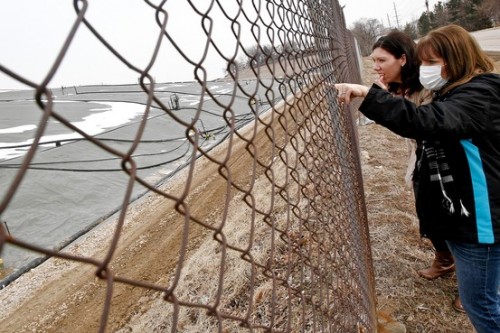BRIDGETON, Mo.—An Environmental Protection Agency review board was pressured by officials at the agency to soften its challenges to an EPA plan for dealing with a highly contaminated radioactive waste site in this St. Louis suburb, a former board member and other people familiar with the matter said.
In what some saw as a sign of the intensity of the dispute, the EPA turned a 2012 review of the site from a public process to a confidential one. Some people familiar with that move believe it was done to save the EPA the potential embarrassment of the dispute becoming public.
The EPA, in written responses to questions, denied that pressure was put on the review board or that there were attempts to hide its views. The agency said a nonpublic “consultation” on the plan was more appropriate than a full public “review” because it was determined that more sampling and testing needed to be done at the site. It acknowledged, however, that a switch from a review to a consultation had never before happened.
At issue is what the EPA should do with the thousands of tons of radioactive waste at the West Lake landfill, a contentious question because of its location in a major metropolitan area. Uranium-processing wastes were illegally buried there 40 years ago by private parties, federal records show. The material will remain dangerous for centuries, experts say, and some residents worry it poses a health hazard.
West Lake is one of scores of sites around the country contaminated by the U.S. nuclear-weapons program, many of which haven’t been fully cleaned up. The Wall Street Journal last year examined some of the problems surrounding these sites, including West Lake.
The EPA regional office in Lenexa, Kan., which oversees West Lake, has said the contamination is contained on site and isn’t harming the public. It decided in 2008 to leave the waste in place and cover it with a protective cap. Faced with criticism from residents who feel the waste should be hauled away, the EPA is reconsidering what to do.
Dawn Chapman, a leader among the activists, and others say the Army Corps of Engineers, which has experience cleaning up nuclear-waste sites, should join the project. That position is backed by four members of Missouri’s congressional delegation, including its two senators. The EPA said it is giving “serious consideration” to the idea.
Part of the agency’s second look brought the matter before the EPA’s National Remedy Review Board, which consists of agency officials from around the country. The board was created in 1996 as part of a package of reforms in the Superfund program to clean up toxic sites, according to the EPA’s website.
In the West Lake case, board members had various concerns about the proposal to leave the radioactive waste in place, said people familiar with the matter. One was whether unreliable data were used to conclude the material was too widely scattered amid other garbage to dig up.
If it was in a more concentrated area, as some records suggested, removal to a licensed radioactive waste site could be a better alternative, given West Lake’s high level of contamination and location in a populated area, said John Frisco, a board member who took part in the discussions. Mr. Frisco, now retired, was a Superfund manager in the EPA’s New York City-based regional office.
Though the review board is traditionally a relatively independent internal entity, EPA officials tried to “soften some recommendations” and “remove” some information that raised questions about the proposal to leave the waste in place, said Mr. Frisco.
“It kind of flies in the face of an independent review,” said Mr. Frisco, who had been on the board since its inception.
West Lake was “politically hot” and led to “fireworks inside the agency,” said another person familiar with the matter, describing it as “a nasty affair” involving “unusual pressure” on the board from EPA officials.
People familiar with the matter said they believed that at least part of the motivation for the pressure came from wanting to defend the previously announced plan to leave the waste in place. Removing it, they said, was seen as likely to be more complex and expensive and carry other risks.
Another person involved in West Lake said there was “a lot of back and forth” regarding a “challenging site,” but didn’t recall feeling EPA officials had improperly “pushed” the board.
One EPA headquarters official who took part in the board’s deliberations, said people familiar with the matter, was Douglas Ammon. Mr. Ammon, who wasn’t a board member, took positions that seemed aimed “to dilute” West Lake recommendations, said Mr. Frisco. Mr. Ammon “was extremely vocal and tried to rewrite stuff,” said another person.
Adding to concerns over Mr. Ammon’s role: He was the direct supervisor of Amy Legare, the review board’s chairwoman. The EPA said he had “management responsibility” for the board.
The EPA said that at times, nonmembers participate in the board’s activities.
When contacted, Mr. Ammon said he needed to check with the EPA about giving an interview; Ms. Legare didn’t respond to interview requests. In its written responses, the EPA said the two wouldn’t be available to give interviews about “pre-decisional, deliberative activities” such as the review board’s consultation.
The EPA declined to provide a copy of the board’s consultation document. However, the agency said that as a result of the board’s efforts, “substantial additional work is under way or being planned to support EPA’s future decision for this site.”
Write to John R. Emshwiller at john.emshwiller@wsj.com

